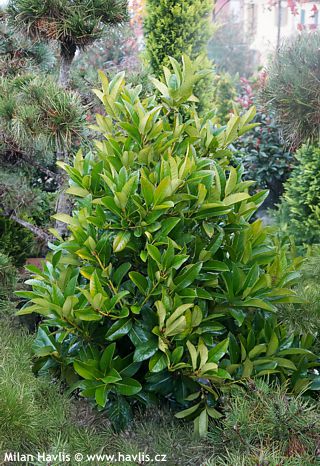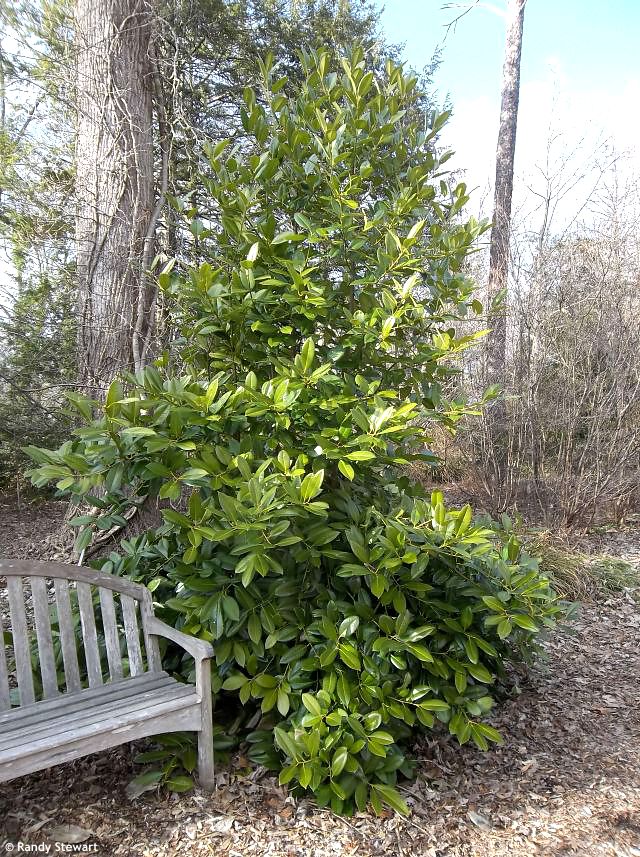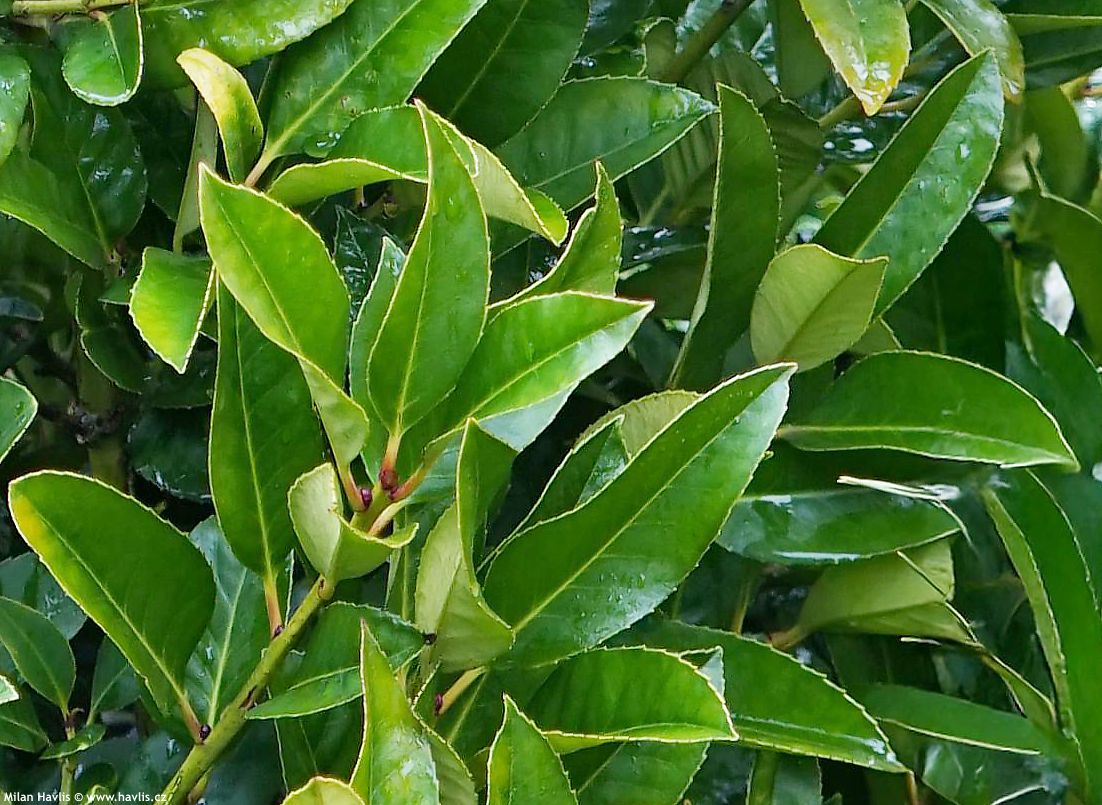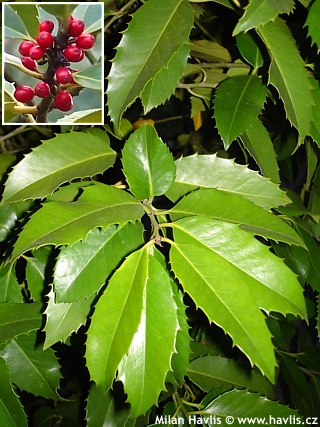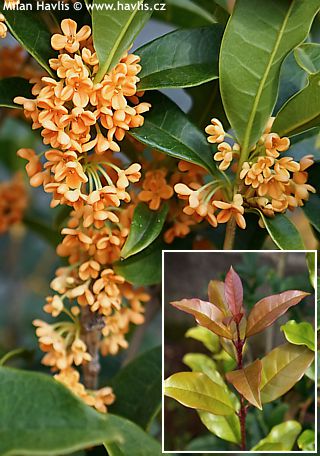Ilex latifolia Tarajo, tarajo holly, lustreleaf holly


Ilex
Evergreen hollies do not have a long history in Czechia or Slovakia, but just like magnolias for example, once introduced, they quickly found their way into our hearts and gardens. The very first record of holly cultivation, it was the common holly (Ilex aquifolium), dates back to 1880 from the chateau park in Sychrov. Exactly 20 years later, it appeared in the Royal Garden in Prague. Those were the years when we experienced extremely cold winter temperatures, but hollies survived. We are very grateful for this, though compared to southern Europe we are a bit of a loser because thanks to their favourable warm climate, proximity to the sea, and expeditions to faraway countries from where new and exciting new things would have been brought, including rare plants, they had appeared there as early as 500 BCE and gradually spread to other temperate areas of Europe, where they naturalized (Great Britain, Benelux countries, northern Germany). There are many species with dramatically different leaves, not all of which are prickly, and many species and varieties are now successfully grown in Central Europe, too, if we prepare them good growing conditions.It is dioecious, meaning each plant has either male or female flowers, never both sexes. It blooms in the first half of spring, and male flowers (abundant and more conspicuous) are identified by their long stamens with pollen, while female flowers (less conspicuous and smaller) have a pistil in the center for collecting pollen and can produce fruit after pollination. These fruits are bright orange red berries containing saponins, which can be dangerous if consumed in large quantities. For a profusion of berries on the female shrub, a male plant is needed in the immediate vicinity, but it can also be in a neighbouring garden or the same district – wherever bees or other insects with pollen can reach. One male shrub has enough pollen to pollinate 7-10 female shrubs.
In Central-European climate it grows moderately fast and forms relatively compact and rather upright shrubs or small trees. Its mature size significantly varies depending on the location. Its home has humid yet not extremely hot subtropical weather with mild temperatures, allowing it to grow large leaves and quickly reach a height of 10 meters or more, as it is long-lived. In continental conditions of the temperate zone, its mature size is estimated at about 6 meters high and about 4 meters wide, if not pruned. However, it can be shaped or kept smaller. You can trim all unnecessary, unsightly, and overly long branches in early spring before the buds burst. Optionally, you can trim the branch tips again in mid-summer to thicken the shrub and give it shape, but this is usually not necessary.
Grow hollies in full sun or partial shade; they will also grow in the shade but lose their shape there. They need acidic to neutral, light, and well-drained, very fertile soil (especially fruiting varieties) that will stay moist – they do not like prolonged drying out. Use quality mulch and keep it mulched all year round. Hollies generally do not favour typical Czech clay in the upper soil layers, so it is better to elevate plants, slightly above the original soil level. Use a mixture of original soil and high-quality acidic substrate to fill up the slope. On the contrary, they will be grateful for clay in the lower layers, where they will develop stronger roots later. Fertilization is essential in poor soils, and using mycorrhizal fungi during planting is even better. Before and during winter, if the ground is not frozen, water them. Tarajo holly is fully hardy to about -20°C and can withstand short-term fluctuations a few degrees lower (USDA zone 6).
Last update 31-12-2024
Goods are shipped all over Europe. For Russia and U.K. and for further details please read about SHIPPING OPTIONS HERE.
Are you interested in a serious discount for orders NOV-FEB? Check your options here.
THE PRICES INCLUDE VAT of 15%. For quick conversion you can use 1 CZK = approx. 0.04 EUR
- STANDARD QUALITY - Plants of this group are 1st class quality with number of branches and overall density adequate to their size and age, considering they were container grown.
- DE LUXE QUALITY - This label guarantees a luxurious quality of manually selected plants that, compared to their height and age, are exceptionally dense and beautiful.
- EXTRA - These plants are usually mature and bigger specimens with exceptional overall appearance.
- STANDARD (as described in the plant form) means a tree with a trunk of 190-210 cm and a crown at the top, unless specified differently. The commercial size for trees is their girth measured in the height of 1m from ground.
- HOBBY - These plants are of the same quality as our standard-quality plants but younger and therefore cheaper.
- SHRUB - a woody plant with branches growing bushy from the ground level.
- HALF-STANDARD or MINI-STANDARD - a small tree with shorter trunk, its size is usually specified.
- FEATHERED - These are trees with branches growing already from the base of the trunk and up along the stem.
- GRASSES and PERENNIALS - Sizes given usually read the diameter of the pot or the clump, as specified.












